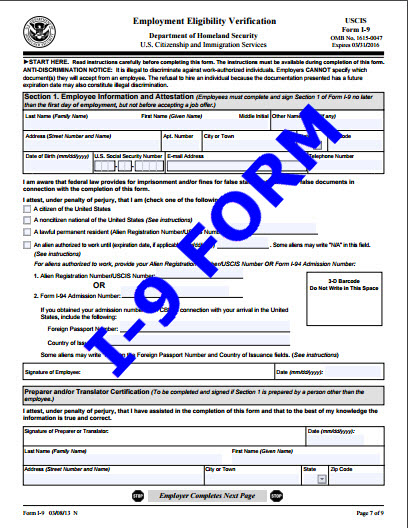
Have you ever had an employee come to you to say that the Form I-9 documentation they gave when you hired them 5 years ago was not correct? Maybe they are coming forward now with the correct documents. Maybe they are just alerting you. Either way, you get an uneasy feeling.
Because you know this gesture throws more than just the documentation into question. It could expose your company to liability if you do not act carefully.
Since 1986, employers have been responsible for obtaining an I-9 form from every employee and for ensuring that those forms are correctly documented and current. Failure to do so can result in fines or even civil and criminal penalties.
Despite the importance of the I-9 form, the government has not made the form easy. And as the conversation about immigration has evolved in our country, so has the I-9 form.
Now on the 13th version, United States Citizen and Immigration Services (USCIS) wants to make this form smart.
The new Smart Form I-9 is still in development, but here’s how it is shaping up.
What Will Be Smarter About the Smart Form I-9
The new Smart I-9 form contains some safeguards that will eliminate many fines on employers that were occurring due to human error. The safeguards include:
- Validation of the correct number of Social Security Number digits;
- Limitations on expired documents;
- Drop down lists of acceptable documents;
- System checks that will ensure that the documentation the employer uses in Section 2 is consistent with the status that the employee indicated in Section 1.
For example, if an employee checks “U.S. Citizen” by mistake or due to a misunderstanding and presents a lawful permanent resident card, the system would presumably alert the employer. These checks and balances could reduce employer liability in the case of a government audit.
Still a long way to go
The Smart Form I-9 system is not designed to catch all errors though, and needs much more work to make it a simpler, easier and clearer process.
In some cases, the Smart Form I-9’s inability to work with large company HR software systems is making even more work. It will mean re-entering, for example.
The instructions for use of the Smart I-9 Form have ballooned to 15 pages from six with the previous iteration. This is also cause for concern, as the movement toward a smart form would seem to be an effort to simplify the process, not complicate it.
Internal Company Audits Can Mitigate Compliance Risks
Still, the Form I-9 is here to stay. Employers need to ensure compliance so that they do not incur fines or penalties. A careful sample audit is a great way to see how well the process is going in your company in a timely and budget-friendly manner.
A careful sample audit involves reviewing a sample of the I-9 forms to see if they are properly documented and if not, understanding the risk the company has and what it could do to mitigate that risk.
I say ‘careful sample audit’ because the manner in which the audit is conducted cannot discriminate in any way or that too could implicate the company. Samples must be taken objectively, such as with an alphabetic algorithm, and executed faithfully. Any unclear documents uncovered during the audit are also governed by strict rules of protocol for investigation.
Why do a sample audit? If you have a large workforce where it is difficult to ensure that all employees are documented properly, a sample audit can:
- Mitigate your company’s risk of fine or other penalties. In extreme cases, top managers can be personally liable and a sample audit hedges that risk.
- Uncover misunderstandings or inconsistencies in your company’s process which can be managed better than if uncovered by Immigration and Customs Enforcement (ICE).
- Generate goodwill and reduce damages in the event of an ICE audit. If you can show that your company has done a sample audit and has trained workers annually to execute the process correctly, ICE is more likely to assess lower fines for violations they uncover.
Contact me at 630-262-1435 today to set up a careful internal audit to ensure your organization is in compliance and to steer clear of civil and criminal penalty risks.
